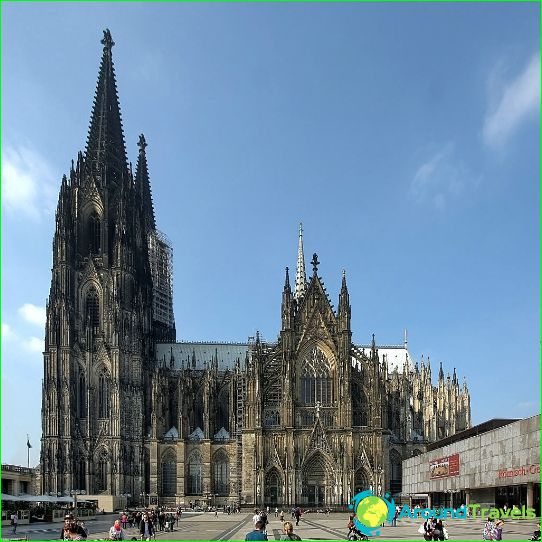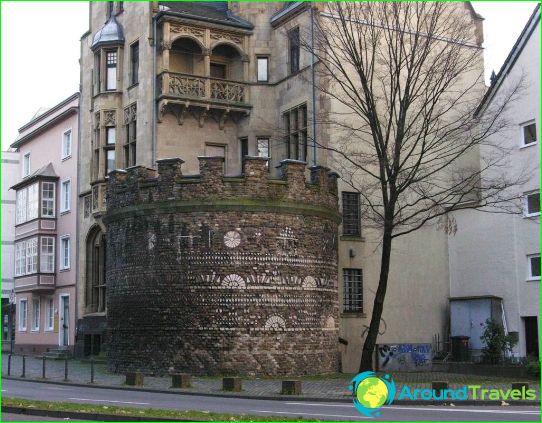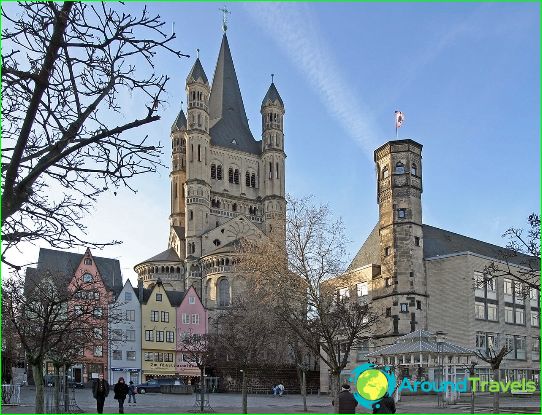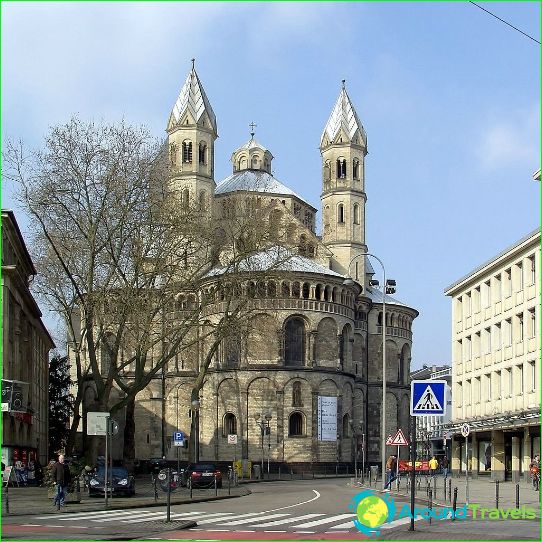Cologne history
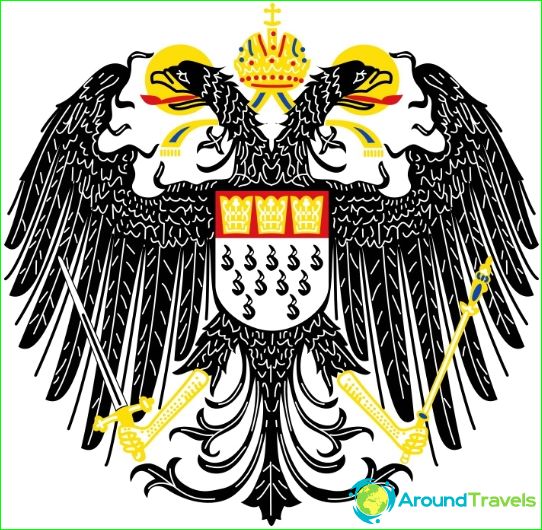
Cologne is one of the oldest and largest cities in Germany.
In the 1st century BC. on the right bank of the Rhine, in the lands of present-day Cologne, the Germanic tribe of the Ubi lived. About 39 BC by agreement with the Romans, the murders moved to the left bank. The Romans founded on the right bank of the Rhine a small settlement Oppidium Ubiorum, which soon became an important outpost of the empire..
In 50 A.D. a native of Oppidium Ubiorum, Agrippina the Younger (Julia Augusta Agrippina), already by that time the wife of Emperor Claudius, persuaded her husband to give her hometown the status «colonies», thus endowing him with a number of rights and privileges. The city got its name «Colonia Claudia Ara Agrippinensium» (lat. Colony of Claudius and the altar of Agrippinians). Subsequently, in everyday life they began to use it simply «The colony» or «Cologne».
Formation and flourishing of the city
The city begins to actively grow and develop and by about the 85th year it becomes the capital of the province of Lower Germany. In 260, the Roman commander Marcus Postum, taking advantage of the crisis and a series of military conflicts, proclaimed himself emperor of the Gallic Empire, of which Cologne became the capital. The Gallic Empire lasted only 14 years, after which Cologne again became part of the Roman Empire. In 310, by decree of Emperor Constantine, the first bridge over the Rhine was built in Cologne. In the middle of the 5th century, Cologne was conquered by the Ripoire Franks.
Since Roman times, Cologne has been the seat of a bishop; in 795, by the decision of Charles I the Great, the city received the status of an Archbishopric. The archbishops of Cologne had exclusive power and for almost five centuries completely ruled the city. Archbishop of Cologne was also one of the seven electors of the Holy Roman Empire.
A new page in the history of Cologne begins in 1288 with the so-called Battle of Vorringen, which was caused by a long conflict over the rights to the Limburg inheritance (the main parties to the confrontation were the Archbishop of Cologne Siegfried von Westerburg and Duke Jean I of Brabant). As a result, Cologne actually became a free city, and although everything also remained the center of the archbishopric, the archbishop retained only the right to influence justice..
The location of Cologne at the intersection of important trade routes has been the basis for the development and prosperity of the city for centuries. For a long time, Cologne was one of the largest and most important shopping centers in the region. A significant role in the city's prosperity was played by its membership in the Hanseatic League, as well as the status of the Free Imperial City, officially assigned to Cologne in 1475. The peak of the city's prosperity fell on the 15-16th centuries..
New time
In 1794, in order to avoid destruction, Cologne actually voluntarily surrendered to the French and, becoming part of the Napoleonic empire, lost its independence. In 1814, the city was occupied by Russian and Prussian troops, and already in 1815, by decision of the Congress of Vienna, Cologne withdrew to Prussia.
The 19th century for Europe was the era of global industrialization. Cologne also did not stand aside, for which this period became a new stage in development. In 1832, a telegraph line was laid, and in 1843 the Cologne-Aachen railway line was opened. An important event for the townspeople was the resumption of the construction of the famous Cologne Cathedral (work was stopped in the middle of the 16th century). In 1881, the medieval city walls were demolished, and Cologne, due to the annexation of the suburbs, significantly expanded its borders. By the end of the 19th century, many factories and factories were built in Cologne and the city became one of the largest industrial centers of the German Empire..
Cologne survived the First World War with minimal damage. During the Second World War, as a result of multiple bombings, most of the city was thoroughly destroyed. And although the post-war reconstruction of Cologne progressed at an accelerated pace, it took more than one decade to rebuild the city and establish infrastructure.
Today Cologne is a large industrial, transport and cultural center of Germany. The city is famous for its many excellent museums and galleries, as well as an abundance of various cultural events, attracting millions of tourists from all over the world every year..

